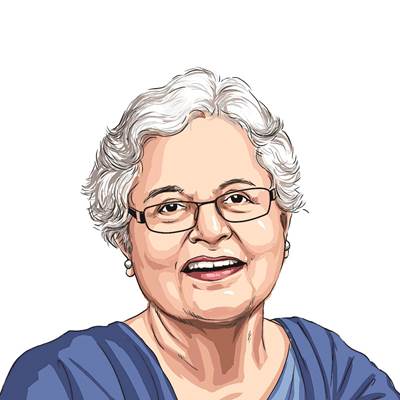Opinion The difference a year makes
UPA-II is struggling to regain a sense of cohesion...
The first year of Manmohan Singhs second term as prime minister has been more turbulent than could have been imagined when the general election results came in last May. The Congresss numbers were up,while its main rivals,the BJP and the CPM,were demoralised after taking significant losses. The prime minister was no longer an untested leader,but had emerged at the end of his first term as a statesman of stature.
But UPA-II has lurched from one crisis to the next,giving a sense of drift and without notching up any notable achievement. The first year of a government is normally a honeymoon period,but Dr Singhs government appeared under siege,with ministers and partymen speaking at cross purposes. The cacophony of discordant voices cannot be attributed simply to impetuousness,which infected younger ministers like Shashi Tharoor and Jairam Ramesh. Ironically,with their savvy manner and serious academic credentials,both had ironically been meant to be showpieces of the new generation Congress.
But it is not the young alone who are speaking out of turn. A seasoned veteran like Digvijaya Singh,a trusted adviser to both Congress President Sonia Gandhi and her son Rahul,mounted a carefully calibrated attack against the home ministry. Maverick Mani Shankar Aiyar announced that he supported Digvijaya Singhs position on the governments Naxalite strategy one lakh per cent. There have been other public spats. Ramesh and Sharad Pawar have crossed swords over clearance for Bt brinjal,Kamal Nath and Ramesh over road projects. M.S. Gill and Suresh Kalmadi are frequently at loggerheads.
State units of the party have similarly been plagued by a newfound rebelliousness. Andhra Pradesh,which returned the Congress to power with a thumping majority just a year ago,is in serious danger of slipping out of the partys control. The Congress could have to pay a heavy price for its failure to curb dissidence and ham-handed tackling of the Telangana issue.
The fabled discipline of the Congress is breaking down. Party persons traditionally are expected to toe the party line blindly. In the past dissenters,Sharad Pawar and N.D. Tiwari among them,were shown the door pretty fast. But there is a new spirit of laissez faire now. Ramesh,for example,so far has been merely given a rap on his knuckles for speaking against his own governments policy on foreign soil. Some even see more than mere coincidence that the home ministry has been made the common target of attack by those speaking out of turn on government policy.
The government has been even less successful in bringing fractious allies in line than in disciplining its own flock. There is growing resentment in the Congress that alliance partners are treated with kid gloves. Tharoor had to resign. In contrast,the PM is unable to get rid of Telecom Minister A. Raja,though his ministry is submerged in scandal. Pawar,in effect the big boss of Indian cricket,remains unscathed,while Lalit Modi insists that he is being made the fall guy for collective decisions of the BCCI. A mercurial Mamata Banerjee has not just decided to fight the Kolkata municipal elections on her own but has even lured some big names from the Congress.
During the Budget presentation,the allies distanced themselves from the government on the fuel and fertiliser price hikes. The Congresss old foe Mayawati had to bail the UPA out during the cut motion brought against the finance bill. To buy peace with the SP and the RJD,the government had to concede on holding a caste-based census and abandon its efforts to push through in Lok Sabha the Womens Reservation Bill,which was to be the hallmark legislation in the first year of its new term.
In UPA-I,the Congress claimed that the secret of its success was the perfect partnership between Sonia Gandhi and Dr Singh. The PM handled the government and the party president took the political decisions. Actually,the Left parties played a key role in political management. Todays leadership vacuum is largely because of confusion over the actual power structure within the party and the government and whether Rahul Gandhi will join the government and,if so,when. Sonia Gandhi has the unquestioned final word,but she generally leaves the micromanagement to others. She favours consensus,unlike her iron-willed mother-in-law,Indira Gandhi,who had implicit faith in her own instinct. The idealistic vision of NGOs in the social sector appeals to Gandhi more than the bureaucratic approach of her ministers constrained by budgets and administrative lacunae. The return of the proposed food security legislation to the cabinet for amendments is indicative of the power shift in the government-party balance.
How this plays out could define the rest of this governments term.
coomi.kapoor@expressindia.com





